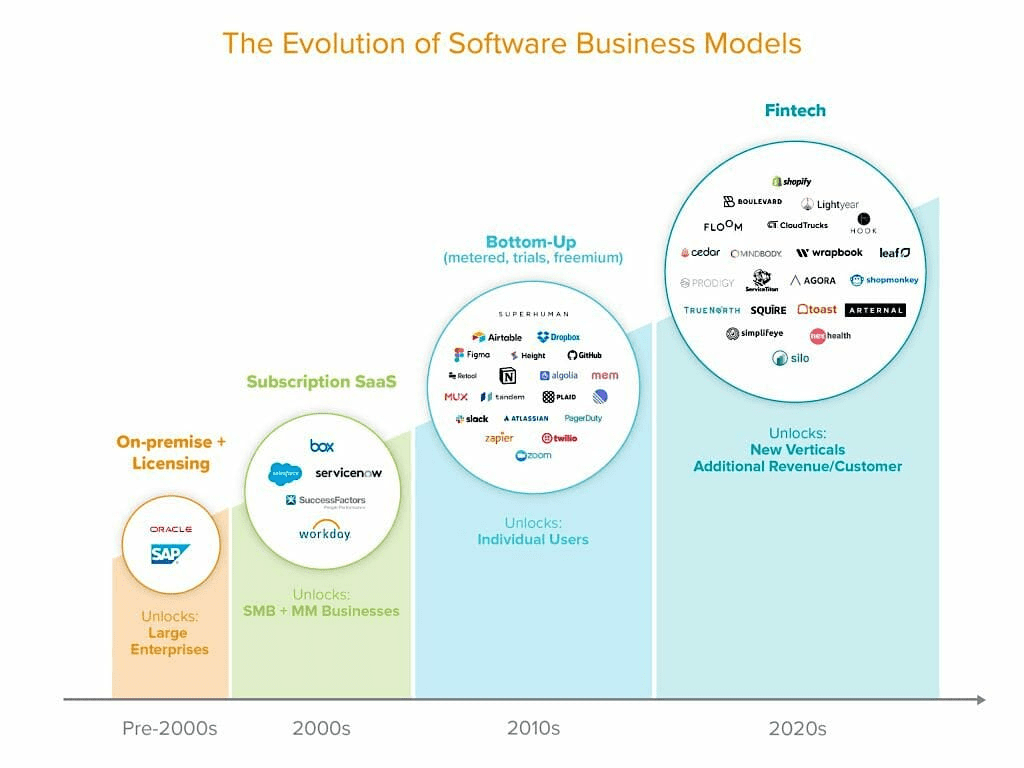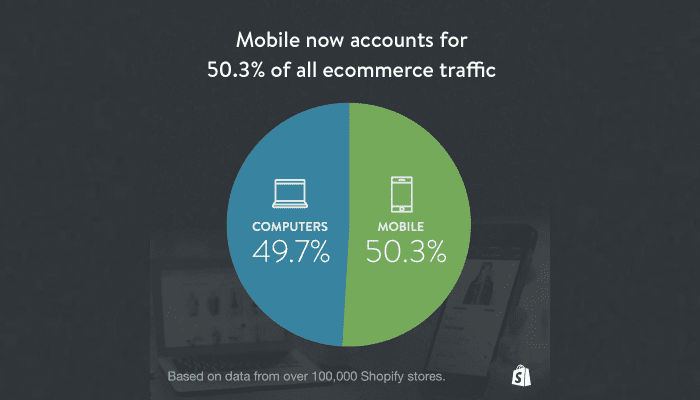SaaS is a complicated term that is easy to misunderstand. It can be both a business and a software distribution model, and there are a lot of terms we have to explain. A lot of aspects determine the workflow and growth of SaaS, and in this article, we’ll try to cover at least most of them.
SaaS is not an independent industry, but SaaS software is a part of a quickly evolving market. There are trends and vectors of growth in this market and you can’t work with the SaaS without its understanding. So let’s take a look at where the Software-as-a-Service is headed in 2021.
What is SaaS?
SaaS (Software-as-a-Service) as one of the software distribution models means that the distributed software is maintained by its provider. The software itself and all the data it is connected to are stored on the cloud, so the SaaS is updated over-the-air. All the updates are done automatically and in a blink of an eye.
Besides, to use a SaaS system your client won’t need to download any additional apps or waste a lot of time on its maintenance.
Take a look at the infographics below that demonstrate the rapid growth of SaaS compared to the PaaS (Platform-as-a-Service) or IaaS (Infrastructure-as-a-Service), other distribution models.
The infographics also show that security was one of the SaaS challenges in 2020.

As you can see, the SaaS growth was immersed from 2018 up to 2020 (nearly 20% of new SaaS companies appeared on the market), and the same indicators are predicted to grow by 30% in 2023.
According to InformationAge, the value of the SaaS market will reach around $121m US in 2021.

But there is more to SaaS than just big numbers. You need to understand its basic vectors to truly evaluate its potential for a business.
There are 4 types of SaaS solutions:
Vertical SaaS: the SaaS of this type is built only for one industry, its unique goals, and needs. An example is any app that works for 1 particular industry, like SaaS healthcare or fintech startup.
Horizontal SaaS: these solutions are fitting for all types of business in every industry by covering the common problems on a wide market. They are by all means not niche and are needed by every company there is. They can be presented by applications for accounting, client management, talent acquisition management, and any other applications for process automation.
Packaged SaaS: that is built strictly for determining business processes. For example, a SaaS solution for supply chain management or support service automation.
Collaborative SaaS: that is the applications you probably are using today. They are meant to enhance the team’s work performance, speed up and automate the communication processes, and build up its quality. Take Slack as an example.
Now, when you are packed with all the knowledge you needed, we think it’s about time to tell you about SaaS market trends. Let’s roll!
Trend 1: Artificial Intelligence
AI is trendy anywhere and it is relevant for SaaS either. According to a Gartner survey, around 40% of companies are ready to adopt this technology in 2021 in their workflow, and the predicted growth of cloud AI will be five times higher in 2023 compared to 2019. The opportunities that cloud storage and automated analysis have can change the whole world and every industry. This is why AI is one of the most popular solutions for cloud platform optimization. So, even though this technology is still innovative and, some would say, unstable, companies are eager to take a risk and work with it.
And it is worth it; they do get the profits!
The best use for artificial intelligence in SaaS is and always will be the predictions of customers’ behavior by analyzing their previous actions in the application. It also can be used for automation of support services, pricing, talent acquisition, and other goals.
AI in SaaS can also improve the security of users’ digital identity. Thanks to this technology it is now possible to detect malfunctions, data leaks, frauds, and even prevent cyber-attacks.
Ways to use AI in SaaS applications:
- create ultra-personalized applications. Artificial intelligence can improve the customization level of SaaS software for the user. For example, place frequently used functions in more comfortable parts of a page, changing the interface depending on the user’s behavior in the application;
- predict purchases and on-demand products. Artificial intelligence can do this for every application, but for SaaS, it all works even better. Since SaaS applications often sell the software, artificial intelligence is able to predict what functions will be the most popular among different types of clients;
- predict client value. This is an amazingly important thing when we talk about business because the client value determines your total income. The ability to predict customer behavior and the client value using analytic algorithms can significantly increase the total profit and help you set targeting properly.
One of the reasons why AI is so trendy in SaaS is the growth of its popularity among big enterprises. Trends are always set by the monopolists, and SaaS with AI is used by such market giants as IBM, Google, and Salesforce.
Speaking of them. They manage to improve personalization and customer experience from using software, increase speed and productivity, automate processes, and make the work in the app more secure with AI. All this is possible through the use of predictive analytics, natural language processing, and machine learning. This is how Salesforce is setting the market trend with the use of this technology in their SaaS products.
Trend 2: Micro-SaaS
More abbreviations again. But don’t you worry, it is simple even without Wikipedia-like boring explanations. Micro-SaaS is exactly what you think about when you first hear about this term.
Micro-SaaS is an add-on to bigger SaaS platforms. You can see the products like these almost everywhere: on retail platforms (Amazon Assistant for products comparisons), on apps for grammar checking (Grammarly for Google Docs and MS), even on your email service (Boomerang to schedule messages on Gmail). Some of them are presented as browsers extensions.
When we’re talking about Grammarly, it is easy to track the Micro-SaaS growth in 2021. According to Grow Jo’s review, the annual profits Grammarly gets is around $73m US. The key to their rising popularity is, as we think, a release of MS plugins in 2014. This is when they managed to expand their target audience by Microsoft Office users, and the users that knew about Grammarly before finally got rid of the necessity to click Ctrl – C / Ctrl – V every time they needed to use this product.
This is the story of how Grammarly managed to grow to 8 million active users only in 2 years.
This way Micro-SaaS gets more opportunities to scale on the market and it’s true not only for Grammarly’s example but for every business on this market nowadays.
Nevertheless, you should keep in mind that the type of your product and its quality are of crucial importance for your success as well.
Trend 3: Vertical SaaS
We have already covered the term of vertical SaaS. Now it is time to see why any product that has a narrow focus also has more chances to succeed. The trend for personalization makes this statement true for every industry.
This way, by developing a SaaS app for one industry you get the benefit of a narrow total addressable market. The same paradox makes the marketing companies choose narrow groups of people to target their products on. If you don’t have a giant total addressable market, you will have fewer competitors and more opportunities to understand your audience. And, this way, to have more empathy towards it.
This is why working with vertical SaaS you have more chances to interest your target audience with the unique capabilities of your application. This is also true because horizontal SaaS apps have more problems to address and challenges to face since they have to adapt to the different markets and clients. In a nutshell, this may be what affects their effectiveness.
Horizontal SaaS struggles to find the pain points of their audience because they tend to simplify everything in order to unify it. So, for a SaaS CRM system without individual industrial targeting, it is harder to find what needs of their clients from retail they have to address without losing the empathy to entertainment, for example. Horizontal SaaS solutions have nor time, nor opportunities to have unique targeting for everyone. They fit only to the common market problems: business acceleration, automation of processes, etc.
Vertical SaaS solutions, on contrary, have all means to lead the business in the way described above; to have targeting on unique needs of their customers. They orient on a separate market segment which gives an opportunity to customize the interface to the needs of their customers. The vertical SaaS solutions won’t have the same problem with targeting. If the system is created for retail specifically, there is a lot of time to understand and empathize with their audience.
The tendency to make everything personalized and oriented on the end-client pushed the vertical SaaS to immerse growth in the last decade. The world has passed the time of horizontal SaaS, among which are such giants as Microsoft and Slack.
We think that 2021 is the time for vertical SaaS solutions that already are capturing the market. Among them are rising stars and established monopolists as Shopify (revenue $9.3b US), Veeva ($2.4b US), and Cox Automotive ($6b US).
The reason for this is that the horizontal SaaS market is crowded with competitors. The more competitors there are, the harder it is to fit in the market.
There are over 15.552 SaaS companies in the world according to a June, 2019 report from Crunchbase. Around 60% of them are horizontal SaaS.
This way it is clear that vertical SaaS is your trend if you don’t have an opportunity to conquer the market that is already captured by the monopolists.

Resource Finances Online says that the vertical SaaS market grew almost three times bigger over the last decade, and in 2021 it will continue to expand. There is still a lot of space for new disruptive ideas in there so don’t delay to fill it in!
Trend 4: Mobile-first approach
This trend probably has the most understandable reasons to exist. According to CNBC, 72,6% of people will use smartphones for web-surfing in 2022. This doesn’t mean that all smartphone users will use SaaS apps. But, nonetheless, there are more than 15.000 SaaS companies in the world and every one of us probably has office programs, online shopping apps, and something like this preinstalled on our smartphones.

The statistics above demonstrate where the focus of Internet users is shifting. This is why the mobile-first approach for SaaS applications makes so much sense: if they do not adjust to the market, users won’t be interested in their product.
Official Shopify statistics show quite interesting data.
There are more mobile users than PC users. And even this 1% is a big deal when you think that these statistics were based on more than 100,000 stores.
The right approach affects the user experience and, as a result, demand. More and more businessmen and web users prefer mobile devices, so shifting your focus to the mobile-first approach will be a good solution.
In case you already have a desktop version of your SaaS app, find a reliable technical partner willing to help you develop its mobile version.
The success of your SaaS application however depends not only on trends. A lot can affect how many users your app will attract; market situation, uniqueness of your idea, qualifications of your team, etc.
But it is a bare necessity to be relevant to the market, you can always track the trends and by this provide your application with a little place in the heart of your users. And even more so – this can make your SaaS solution last longer on the market. You provide your idea with relevance and this is priceless.
Be ready to change with the market, and you will find the audience that will look forward to your new products, ideas, and updates.

































